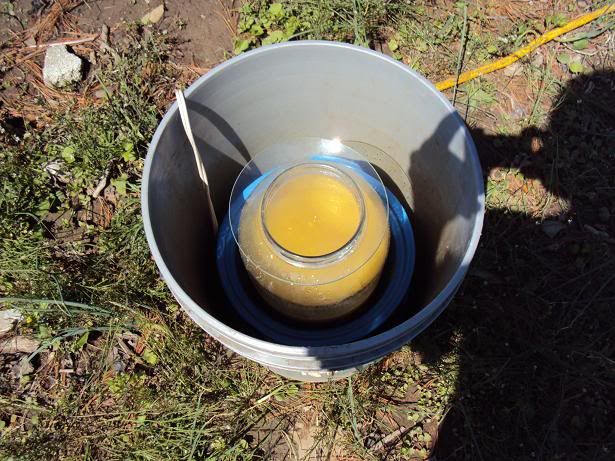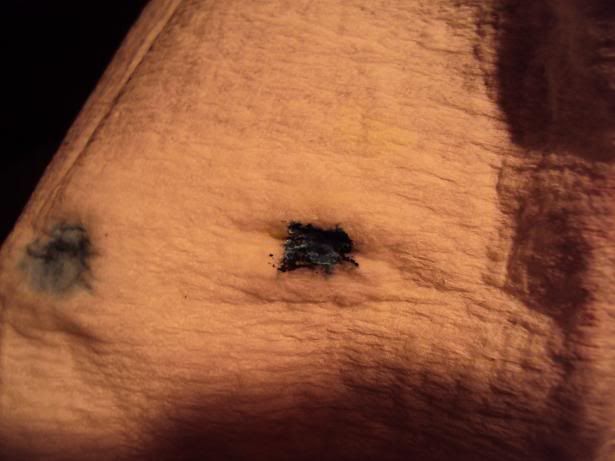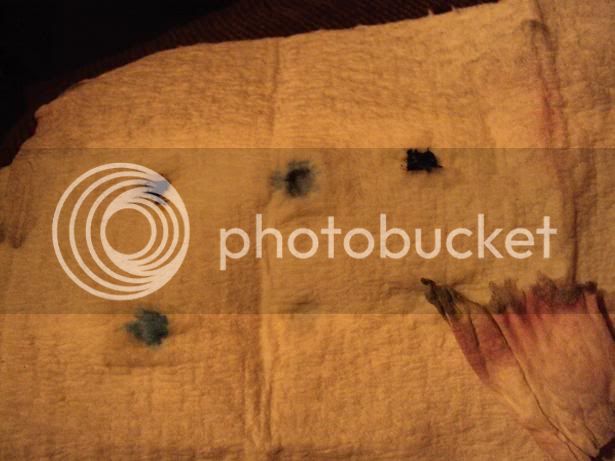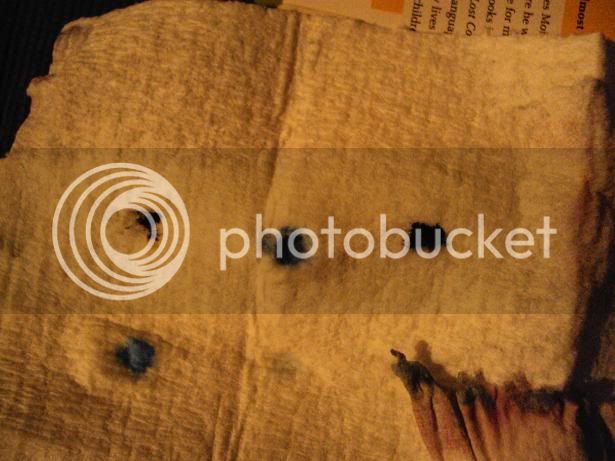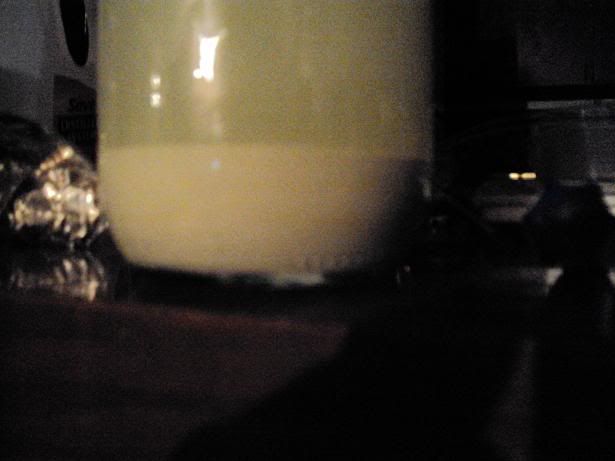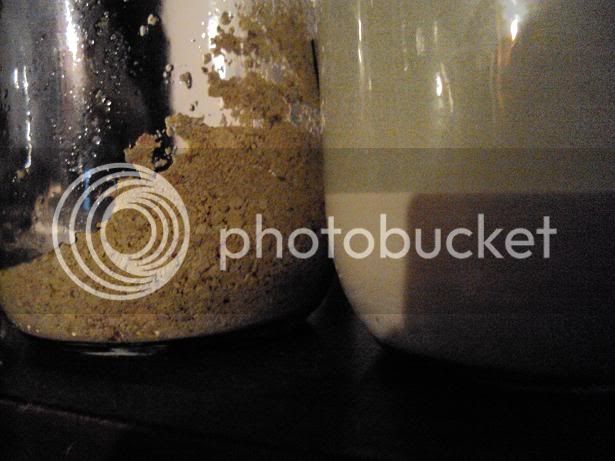Hello
I've been reading Hoke and have learned lots from it but still left baffled by these contacts . My only conclusion is they has to be more than just silver in some of them . I had over 200 contacts I removed from 6 dry breakers that came out of Langley Research center in Hampton Va . Build date on the breakers was 1920 . Assuming all the contacts were the same I only had one shot with a handheld scanner and it was suppost to be 52% Ag 45% W and 3% Mo .
Forget a stannous test I get a rainbow of colors in most solutions . Some yellow solutions just turn a green blueish color but on many I get purple on the tip then blue in the middle with a yellow green on the bottom . Thats just sticking a Qtip in about half way on the cotton . Then turning it straight up and dropping one drop stannous on the end of it . Letting it run down wetting the rest of the cotton .
The yellow solutions that turn green blue I understand could be palladium but none of the test are conclusive enough to be sure . The reason I say that is because as I understand it when stannous is used I should first get a yellow color slowly turning green/blue . This just instantly turns to the blue green color .
Pictures are worth a 1000 words and below are just a few that kinda shows more than I could ever hope to explain with my english and understanding of this stuff .
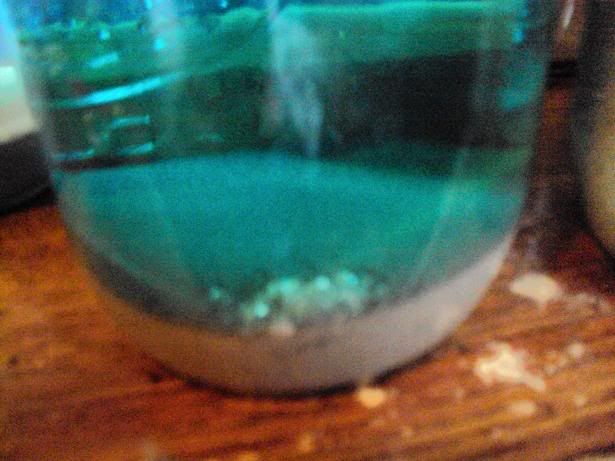
This picture shows the last batch of contacts I processed . I cemented this grey stuff down with copper but it doesn't look like my other silver looks . Plus these metalic balls keep growing in the stuff .
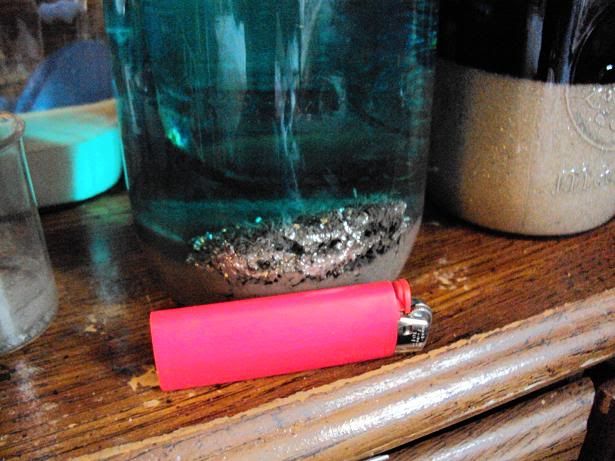
Quite a few of them grew on top of the grey stuff and I could scoup them out with a spoon .
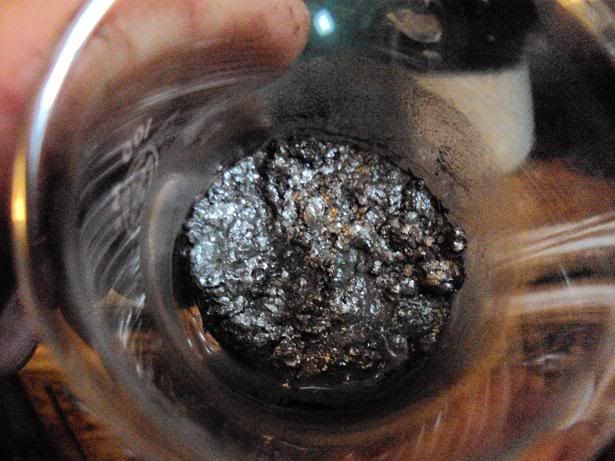
This pic shows them in a small beaker after removing them from the jar . I tried washing this up and when I did it turned back into the grey looking powder that cemented down the first time . What ever it is the stuff is heavy .
Plus when I get finished cementing silver down I can always get a white cloud with salt or a drop of Hcl . So I've been cementing all the silver doen I could and then bring the rest down with salt . I'm about certain my AgCl I've collected is a mixture of metals . I'm so new I really can't explain just why I feel this way but do . Again pictures are worth a 1000 words and might help me explain this feeling also .
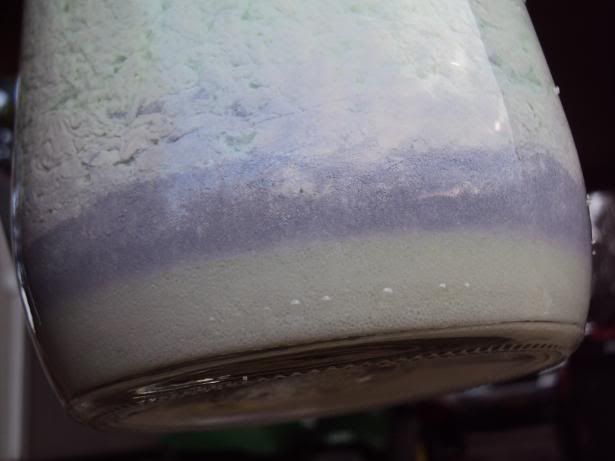
I know people bound to think I'm crazy but do know 2 things for certain . 1) Ive done everything just like I was told to do them for silver . 2 ) I can see different results with my eyes . This picture shows a seperation after adding salt . The bottom layer is a off white yellow color while the upper layer turned purple .
The color purple is another thing that has me wondering . I understood AgCl would come down white then turning purple and then black . Mine has never turned black . I have quite a bit and it stayed purple . Plus I finally made it to the end of Hoke and was reading about the hazards and about stains .
She explains that people handling gold solutions get purple stains , people handling Silver solutions get black stains and yellow is from nitric . Well I'm not trying to get my hopes up or anything like that but only on 2 occasions have I had black stains . Once I had a yellow spot I'm guessing was from nitric but since the start you could color me purple . Out of all the small stains I ended up with most have been purple .
I hope the pics help someone to help me . I'm thinking my AgCl ?? should be washed in ammonia and that scares me thinking about mixing silver and ammonia . Any help with how to proceed would be appreachated .
Lonnie
I've been reading Hoke and have learned lots from it but still left baffled by these contacts . My only conclusion is they has to be more than just silver in some of them . I had over 200 contacts I removed from 6 dry breakers that came out of Langley Research center in Hampton Va . Build date on the breakers was 1920 . Assuming all the contacts were the same I only had one shot with a handheld scanner and it was suppost to be 52% Ag 45% W and 3% Mo .
Forget a stannous test I get a rainbow of colors in most solutions . Some yellow solutions just turn a green blueish color but on many I get purple on the tip then blue in the middle with a yellow green on the bottom . Thats just sticking a Qtip in about half way on the cotton . Then turning it straight up and dropping one drop stannous on the end of it . Letting it run down wetting the rest of the cotton .
The yellow solutions that turn green blue I understand could be palladium but none of the test are conclusive enough to be sure . The reason I say that is because as I understand it when stannous is used I should first get a yellow color slowly turning green/blue . This just instantly turns to the blue green color .
Pictures are worth a 1000 words and below are just a few that kinda shows more than I could ever hope to explain with my english and understanding of this stuff .

This picture shows the last batch of contacts I processed . I cemented this grey stuff down with copper but it doesn't look like my other silver looks . Plus these metalic balls keep growing in the stuff .

Quite a few of them grew on top of the grey stuff and I could scoup them out with a spoon .

This pic shows them in a small beaker after removing them from the jar . I tried washing this up and when I did it turned back into the grey looking powder that cemented down the first time . What ever it is the stuff is heavy .
Plus when I get finished cementing silver down I can always get a white cloud with salt or a drop of Hcl . So I've been cementing all the silver doen I could and then bring the rest down with salt . I'm about certain my AgCl I've collected is a mixture of metals . I'm so new I really can't explain just why I feel this way but do . Again pictures are worth a 1000 words and might help me explain this feeling also .

I know people bound to think I'm crazy but do know 2 things for certain . 1) Ive done everything just like I was told to do them for silver . 2 ) I can see different results with my eyes . This picture shows a seperation after adding salt . The bottom layer is a off white yellow color while the upper layer turned purple .
The color purple is another thing that has me wondering . I understood AgCl would come down white then turning purple and then black . Mine has never turned black . I have quite a bit and it stayed purple . Plus I finally made it to the end of Hoke and was reading about the hazards and about stains .
She explains that people handling gold solutions get purple stains , people handling Silver solutions get black stains and yellow is from nitric . Well I'm not trying to get my hopes up or anything like that but only on 2 occasions have I had black stains . Once I had a yellow spot I'm guessing was from nitric but since the start you could color me purple . Out of all the small stains I ended up with most have been purple .
I hope the pics help someone to help me . I'm thinking my AgCl ?? should be washed in ammonia and that scares me thinking about mixing silver and ammonia . Any help with how to proceed would be appreachated .
Lonnie





